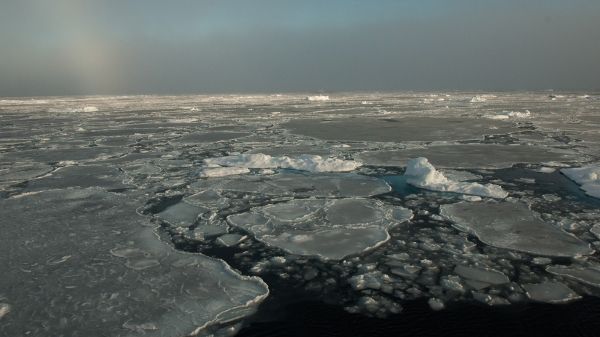The Arctic Ocean's blanket of sea ice has changed since 1958 from predominantly older, thicker ice to mostly younger, thinner ice, according to new research published by NASA scientist Ron Kwok of the Jet Propulsion Laboratory, Pasadena, California. With so little thick, old ice left, the rate of decrease in ice thickness has slowed. New ice grows faster but is more vulnerable to weather and wind, so ice thickness is now more variable, rather than dominated by the effect of global warming.
Kwok's research, published today in the journal Environmental Research Letters, combined decades of declassified U.S. Navy submarine measurements with more recent data from four satellites to create the 60-year record of changes in Arctic sea ice thickness. He found that since 1958, Arctic ice cover has lost about two-thirds of its thickness, as averaged across the Arctic at the end of summer. Older ice has shrunk in area by almost 800,000 square miles (more than 2 million square kilometers). Today, 70 percent of the ice cover consists of ice that forms and melts within a single year, which scientists call seasonal ice.
Sea ice of any age is frozen ocean water. However, as sea ice survives through several melt seasons, its characteristics change. Multiyear ice is thicker, stronger and rougher than seasonal ice. It is much less salty than seasonal ice; Arctic explorers used it as drinking water. Satellite sensors observe enough of these differences that scientists can use spaceborne data to distinguish between the two types of ice.
Read more at Jet Propulsion Laboratory - California Institute of Technology
Image: Small remnants of thicker, multiyear ice float with thinner, seasonal ice in the Beaufort Sea on Sept. 30, 2016. (Credit: NASA/GSFC/Alek Petty)


